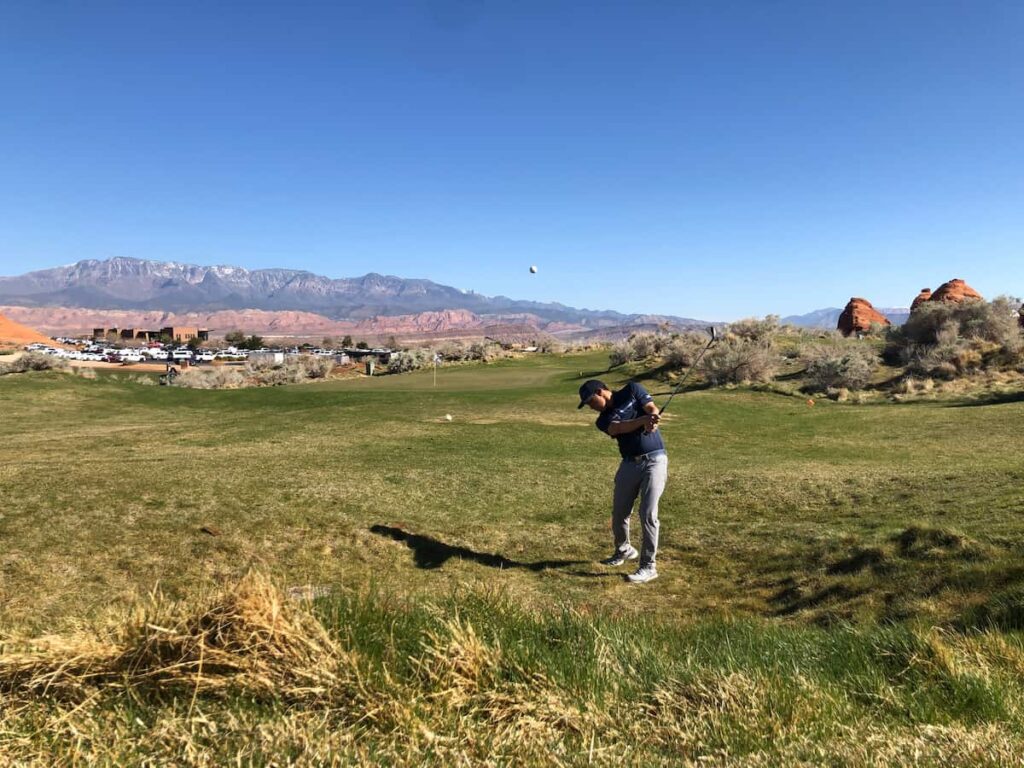What is a Flop Shot?
The flop shot is one of the most dazzling and skillful shots in a golfer’s arsenal. It’s a shot that can turn heads on the golf course, leaving your playing partners in awe of your finesse and precision. But what exactly is a flop shot, when should you use it, and how can you execute it effectively?
Understanding the Flop Shot
A flop shot, also known as a lob shot, is a high, soft shot that lands and stops quickly once it hits the green. It’s designed to get the ball to stop quickly after landing, making it an excellent choice when you need to clear obstacles, such as bunkers or rough, and land the ball gently on the putting surface. It is typically hit with a high-lofted wedge, such as a 58- or 60-degree wedge.
Use Cases for the Flop Shot
- Over Hazards: When you find yourself short-sided with a hazard (such as a water hazard or bunker) between your ball and the hole, the flop shot can help you clear the obstacle and land the ball softly on the green.
- Tight Pin Positions: On greens with tight pin placements near the edge, a flop shot can help you stop the ball quickly to avoid running it past the hole.
- Deep Rough: When your ball is nestled in deep rough near the green, the flop shot’s steep angle can help you lift it out of trouble and onto the green with minimal roll.
- Short-Sided Lies: In situations where the pin is close to the edge of the green and there’s not much green to work with, a flop shot can save you strokes by stopping the ball near the hole.
How to Hit a Flop Shot
To hit a flop shot, follow these steps:
- Use a high-lofted wedge. A 58- or 60-degree wedge is ideal for hitting a flop shot.
- Open the clubface. Open the clubface slightly so that the toe of the club is pointing up in the air.
- Move the ball forward in your stance. Move the ball forward in your stance so that it is about even with the inside of your left heel.
- Make a short, shallow swing. Make a short, shallow swing with the club. Focus on hitting the ball with the leading edge of the club.
- Keep your weight forward. Keep your weight forward throughout the swing and follow-through.
- Practice makes perfect. Spend time on the practice green honing your technique and getting a feel for different distances and trajectories. Find a practice area where you can hit balls over bunkers or other obstacles.
Extra Tips for Mastering the Flop Shot
- Maintain a soft grip and a relaxed swing to maximize feel and control.
- Focus on keeping your head still during the shot to ensure solid contact.
- Understand the lie and the conditions. A wet or firm surface can significantly affect how the ball reacts after landing.
Common Mistakes to Avoid
Here are some common mistakes to avoid when hitting a flop shot:
- Not opening the clubface enough. If you don’t open the clubface enough, the ball will not fly high enough.
- Hitting the ball with the heel of the club. If you hit the ball with the heel of the club, the ball will not fly high enough and will likely slice to the right.
- Making a full swing. The flop shot is a short, shallow shot. Making a full swing will make it difficult to control the ball.
FAQs About Flop Shots
What is the difference between a flop shot and a pitch shot?
The main difference between a flop shot and a pitch shot is the height of the ball’s trajectory. A flop shot produces a much higher ball flight than a pitch shot. This is because the clubface is more open and the ball is positioned further forward in the stance.
What club should I use for a flop shot?
The most common choice for a flop shot is a sand wedge or a lob wedge, typically a 58- or 60-degree wedge. These clubs have higher lofts, allowing you to get the ball airborne quickly.
How do I set up for a flop shot?
Open your stance, open the clubface, and play the ball forward in your stance. This setup promotes a high and soft shot.
How do I control the distance of a flop shot?
The key to controlling distance with a flop shot is the length of your backswing and the speed of your follow-through. Experiment on the practice green to get a feel for different distances.
What are the common mistakes in flop shots?
Common mistakes include decelerating through impact, hitting behind the ball, and not opening the clubface enough. Practice and patience are essential for mastering this shot.
When should I use a flop shot?
You should use a flop shot when you need to get the ball over an obstacle, stop the ball quickly, or hit a high, soft shot.
When should I avoid the flop shot?
The flop shot is a high-risk, high-reward shot. If you have ample green to work with or the lie is straightforward, a simpler chip or pitch shot may be a safer choice.
What is the biggest challenge when hitting a flop shot?
The biggest challenge of hitting a flop shot is making a consistent swing. The swing for a flop shot is shorter and more shallow than the swing for a normal pitch shot. This can make it difficult to hit the ball consistently
In conclusion, the flop shot is a remarkable tool in a golfer’s repertoire, offering a versatile solution to challenging situations around the green. By understanding its principles, practicing diligently, and keeping these tips in mind, you can elevate your short game and add an impressive shot to your skill set. Whether you’re navigating hazards or aiming for tight pin placements, the flop shot can be your go-to shot for finesse and precision.


